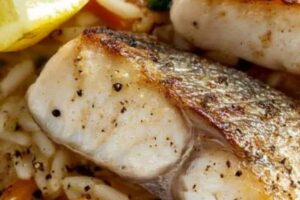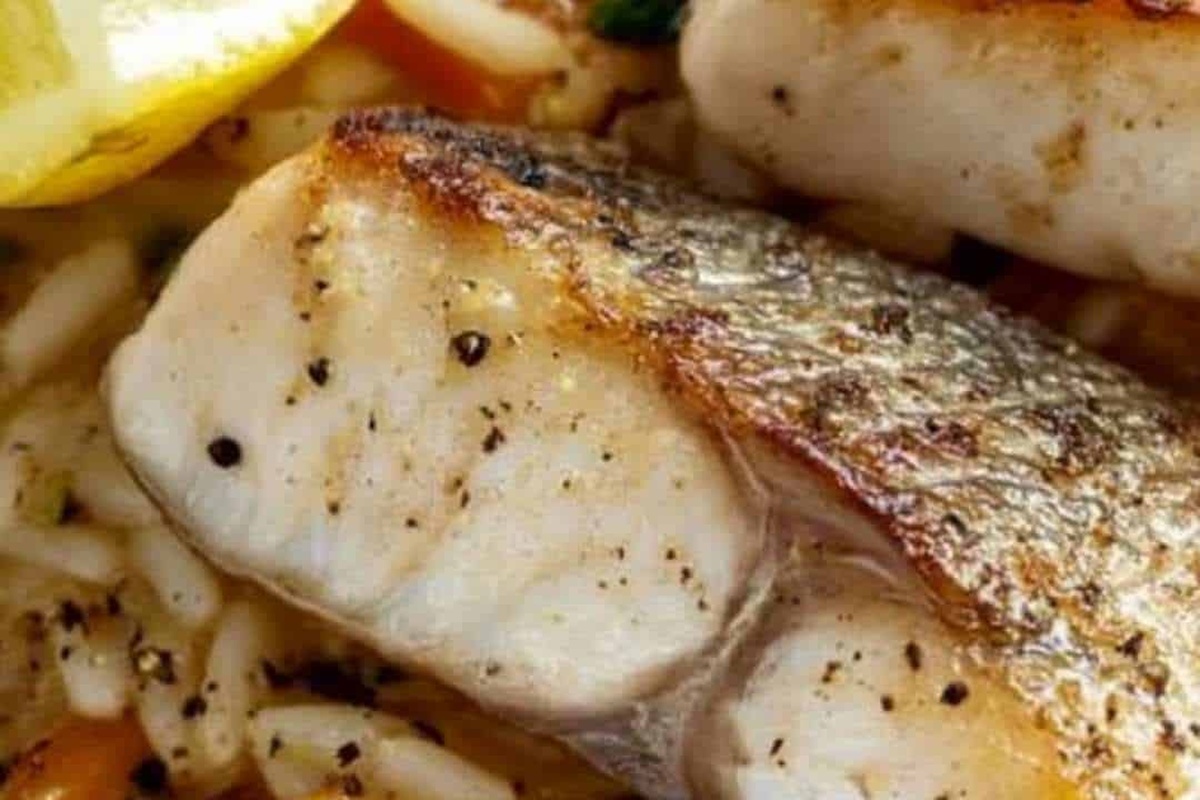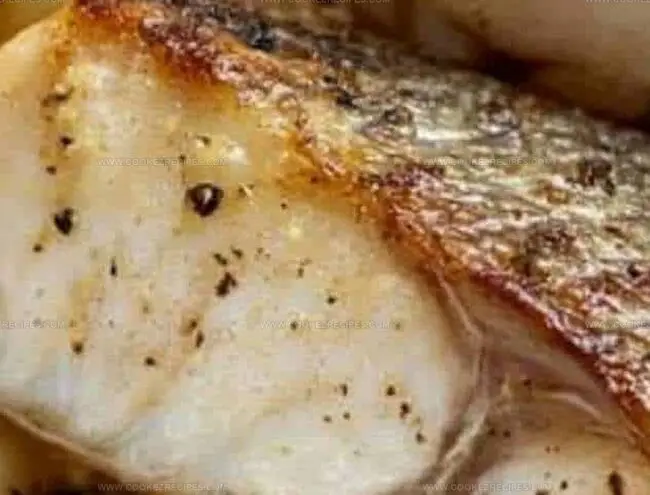Elegant Zander with Vegetables and Butter Foam Recipe
My culinary adventure with zander and vegetables sparked an unexpected love for delicate seafood preparations.
Light ingredients dance together in this sophisticated plate.
Nordic chefs understand how fish can become poetry on a plate.
butter foam adds a whisper of luxury to each carefully constructed bite.
Subtle techniques transform simple components into something magical and memorable.
Professional kitchen secrets emerge through carefully balanced flavors and textures.
You want to experience this elegant recipe that celebrates fresh ingredients and refined cooking techniques.
Zander with Butter Foam Elegant Prep
Step 1: Sizzle Colorful Vegetables
Grab a pan and drizzle olive oil.
Toss in these veggies:Cook over medium heat, sprinkling salt and pepper.
Stir gently for 5-7 minutes until vegetables are tender but still bright and crisp.
Move veggies to a warm spot.
Step 2: Pan-Sear Zander Fillets
Heat a skillet with olive oil and butter over medium-high temperature.
Sprinkle salt and pepper on zander fillets.
Place fish skin-side down, cooking 4-5 minutes per side until skin turns golden and crispy and fish is perfectly cooked through.
Step 3: Create Silky Butter Foam
In a small saucepan, pour white wine and stock.
Simmer and reduce liquid by half.
Stir in cream and cook briefly.
Whisk butter gradually until sauce becomes incredibly smooth and light as clouds.
Season with salt and pepper for extra flavor.
Step 4: Build Beautiful Plate
Arrange sautéed vegetables as a colorful base.
Gently place seared zander fillet on top.
Cascade butter foam elegantly over fish and vegetables.
Step 5: Final Flourish
Sprinkle fresh dill and lemon zest for a bright, aromatic finish.
Serve immediately while everything is warm and inviting.
Elegant Fish Cooking Tips for Zander with Veggies
Zander with Butter Foam Storage Help
Pairing Suggestions for Zander With Veggies
Zander with Vegetables and Butter Served Differently
FAQs
Zander is a popular freshwater fish found in European waters, similar to pike-perch with white, delicate flesh and mild flavor. It’s prized in Central European cuisine for its tender meat and versatility in cooking.
Zander is cooked when the flesh turns opaque white and easily flakes with a fork. The internal temperature should reach 145°F (63°C), and the fish should look moist and slightly translucent in the center.
Yes, you can use similar white fish like walleye, sea bass, or halibut. These fish have comparable texture and mild flavor that work well with the butter foam and vegetable preparation.
Butterschaum is a lighter, more aerated sauce created by whisking butter into a reduced wine and stock base, resulting in a frothy, delicate foam instead of a heavy, traditional butter sauce.
Zander with Veggies and Butter Foam Makes an Elegant Statement
Zander with Veg & Butter Foam Ingredients
Protein:Vegetables:Fats and Cooking Liquids:Sauce Ingredients:Seasoning:Garnish: Print
Zander with Vegetables and Butter Foam A Light, Elegant Dish Recipe
- Total Time: 35 minutes
- Yield: 4 1x
Description
Delicate zander with vegetables and butter foam whispers sophistication on elegant plates. Culinary precision meets artistic presentation, delivering a refined experience that delights discerning palates.
Ingredients
Main Ingredients:
- 4 zander fillets (skin on)
- 1/2 cup peas (fresh or frozen)
- 1 zucchini, julienned
- 1 small carrot, julienned
- 1 small fennel bulb, thinly sliced
Cooking Fats and Liquids:
- 2 tablespoons (29 ml) olive oil
- 3 tablespoons (43 g) butter
- 1/4 cup (60 ml) white wine
- 1/2 cup (120 ml) vegetable or fish stock
- 1/2 cup (120 ml) heavy cream
Seasonings and Garnish:
- Salt to taste
- Pepper to taste
- 1 tablespoon (4 g) fresh dill, chopped
- Fresh lemon zest (optional, for garnish)
Instructions
- Carefully dice zucchini, carrots, peas, and fennel into uniform, delicate pieces to ensure even cooking and elegant presentation.
- Heat a skillet with olive oil and gently sauté the vegetables over medium temperature, seasoning with salt and pepper until they reach a tender-crisp texture, approximately 5-6 minutes.
- Remove vegetables from heat and keep warm, preserving their vibrant colors and delicate flavors.
- Pat zander fillets dry with paper towels to ensure a crisp exterior when cooking.
- Season fish with salt and pepper, focusing on enhancing the natural seafood flavor.
- Warm a skillet with combined olive oil and butter, creating a rich cooking medium.
- Place zander fillets skin-side down, cooking until the skin transforms into a golden, crispy texture, approximately 4-5 minutes.
- Carefully flip the fillets and cook the opposite side for an additional 3-4 minutes, ensuring the fish is perfectly cooked through.
- For the butter foam, combine white wine and fish stock in a saucepan, reducing the liquid by half to concentrate flavors.
- Incorporate cream and simmer briefly, creating a smooth base for the foam.
- Gradually whisk cold butter into the liquid, creating a light, airy butterschaum with a silky consistency.
- Season the foam with salt and pepper to balance the richness.
- Arrange sautéed vegetables as a colorful base on each plate.
- Gently position the zander fillet atop the vegetables.
- Delicately spoon the butter foam over the fish, allowing it to cascade softly.
- Optionally garnish with fresh dill and lemon zest to add a bright, aromatic finish.
- Serve immediately to maintain the dish’s temperature and textural integrity.
Notes
- Select fresh, firm zander fillets with bright, clear eyes for the best flavor and texture.
- Pat the fish dry before seasoning to ensure a crispy, golden-brown skin when searing.
- Use a non-stick skillet or well-seasoned cast-iron pan to prevent the delicate fish from sticking.
- Cut vegetables into uniform sizes for even cooking and a visually appealing presentation.
- Swap zander with other mild white fish like halibut or sea bass for dietary variations.
- Reduce butter foam with vegetable broth for a lighter, dairy-free alternative.
- Keep vegetables slightly crunchy to maintain nutritional value and vibrant colors.
- Add a pinch of white pepper to the butter foam for a subtle, warming heat.
- Prep Time: 15 minutes
- Cook Time: 20 minutes
- Category: Dinner
- Method: Sautéing
- Cuisine: European
Nutrition
- Serving Size: 4
- Calories: 550
- Sugar: 3 g
- Sodium: 300 mg
- Fat: 38 g
- Saturated Fat: 20 g
- Unsaturated Fat: 15 g
- Trans Fat: 1 g
- Carbohydrates: 15 g
- Fiber: 2 g
- Protein: 30 g
- Cholesterol: 110 mg




Katherine Pierce
Recipe Curator & Food Educator
Expertise
Education
Boston University Metropolitan College
Certificate Program in the Culinary Arts
Focus: French and international cuisine techniques, Hands-on culinary training with industry professionals, Food industry insights and operations
Katherine grew up believing every dish has a story. She studied the art of food at Boston University and explored the history behind it. She loves pulling easy recipes from every corner of the world and putting them at your fingertips.
When Katherine’s not writing or testing new flavors, she’s teaching cooking classes, baking colorful mooncakes, or dreaming up new ways to mix old favorites with new twists.